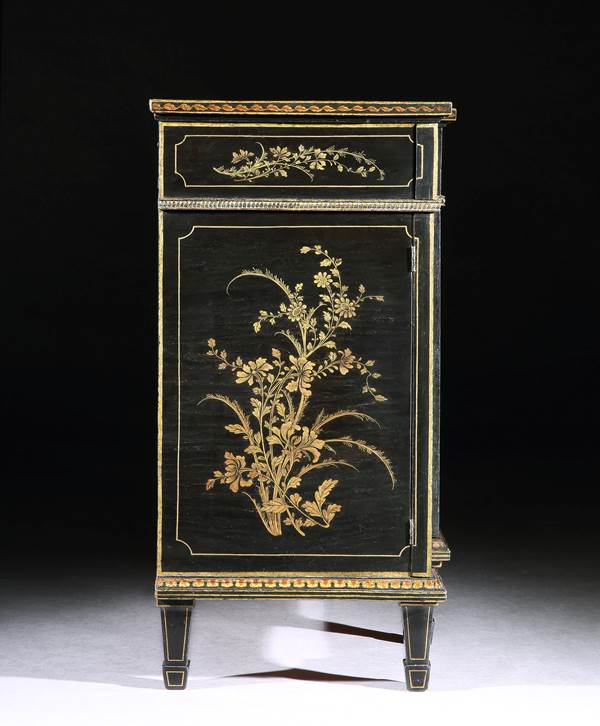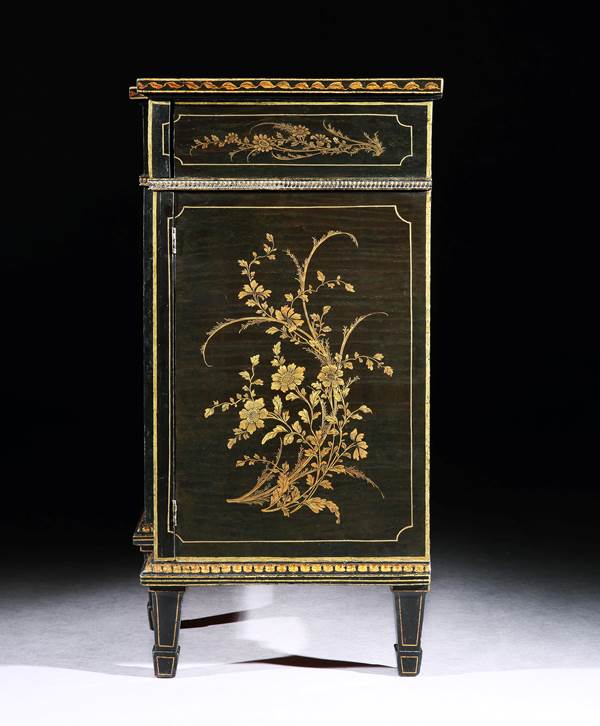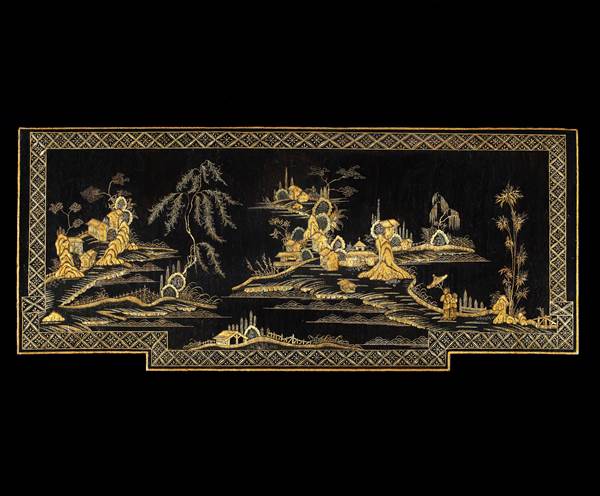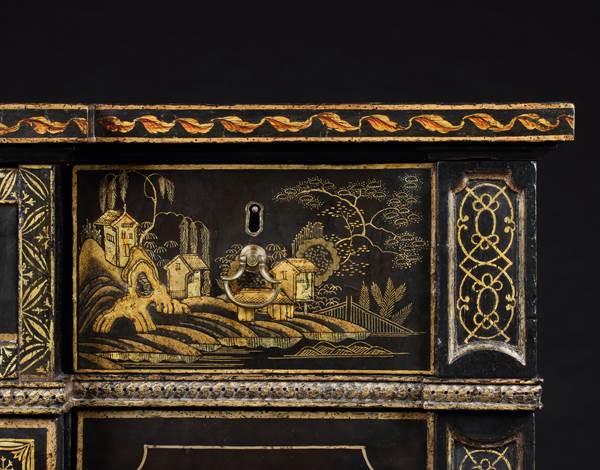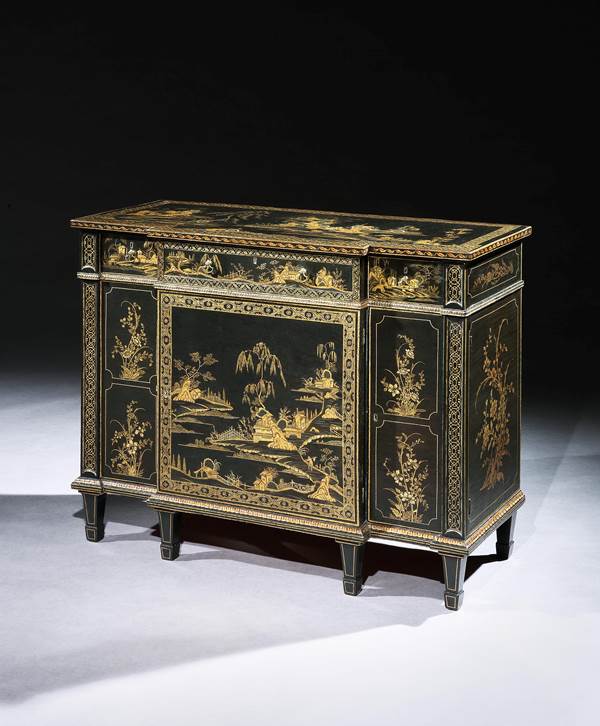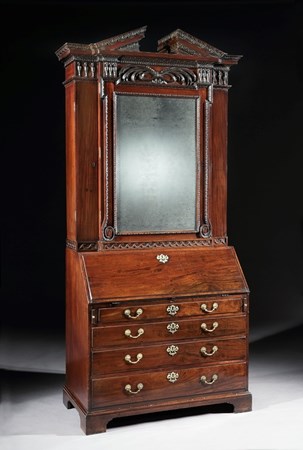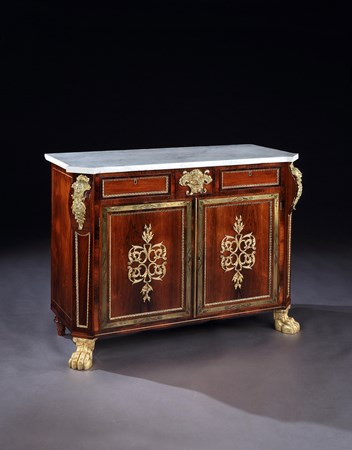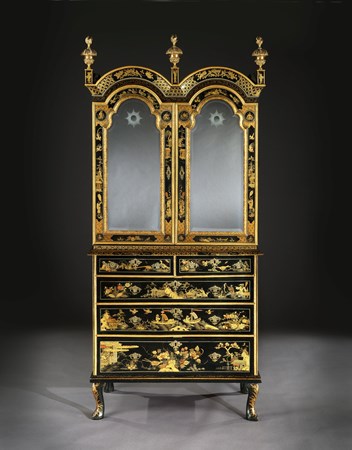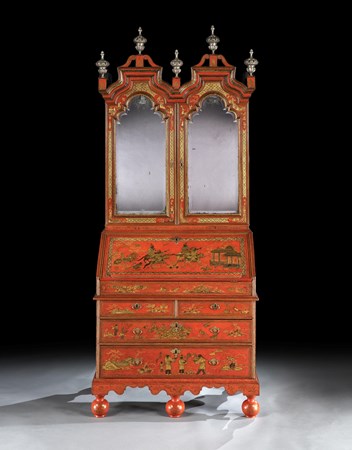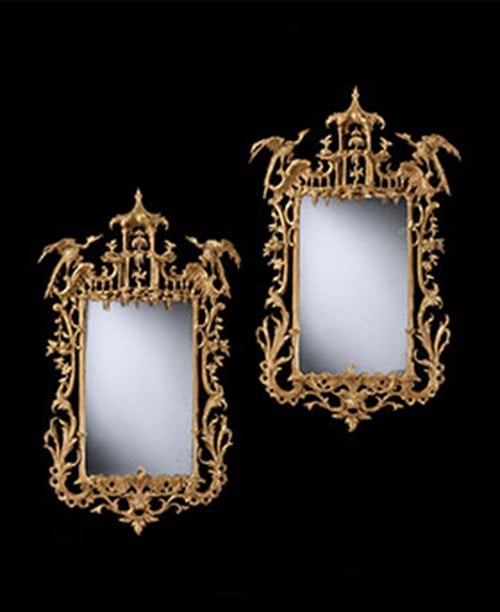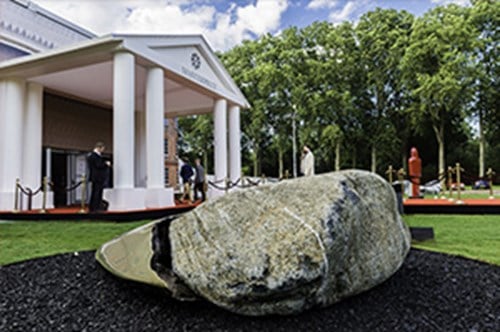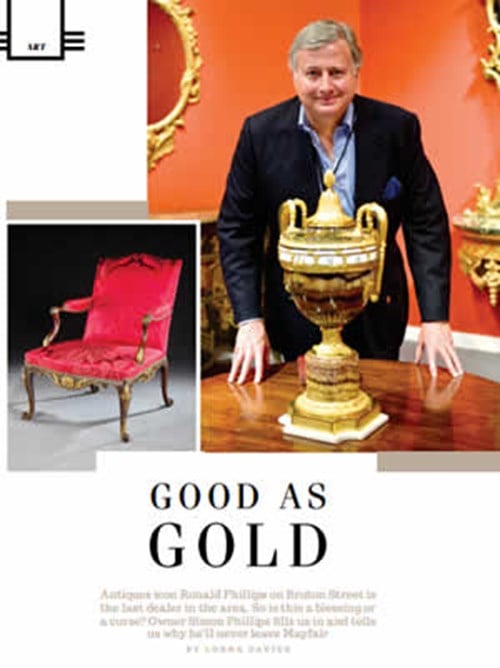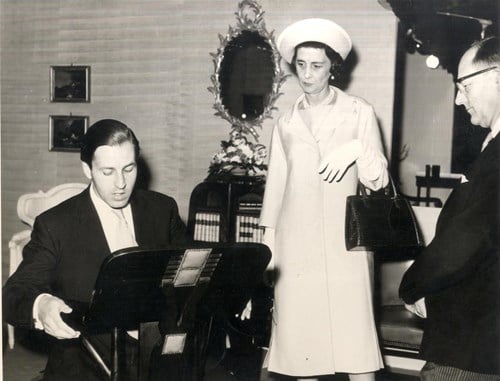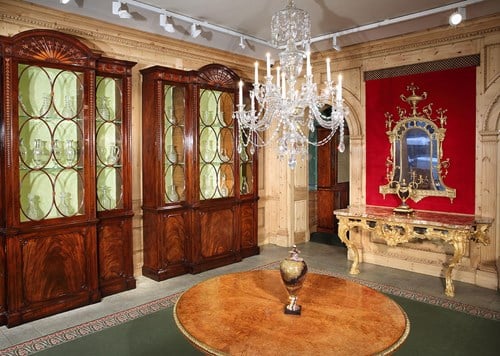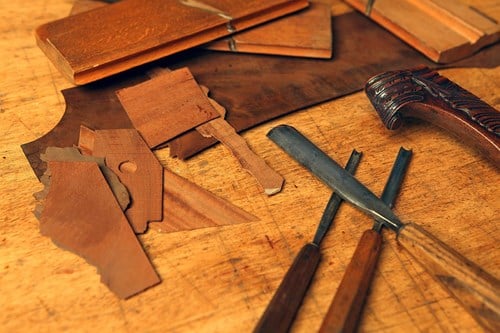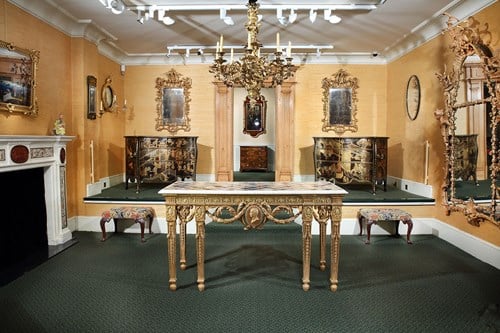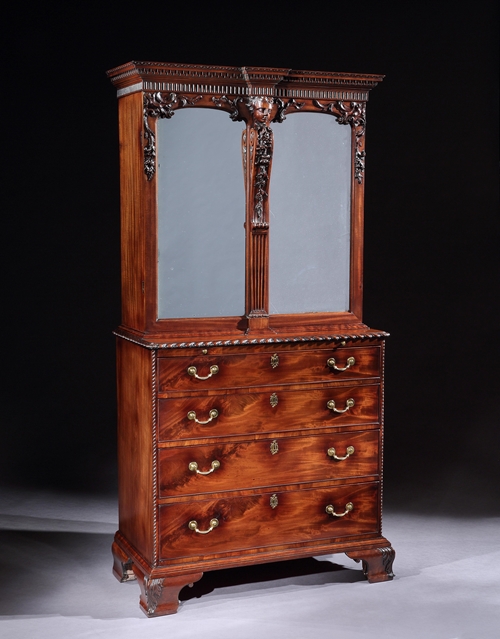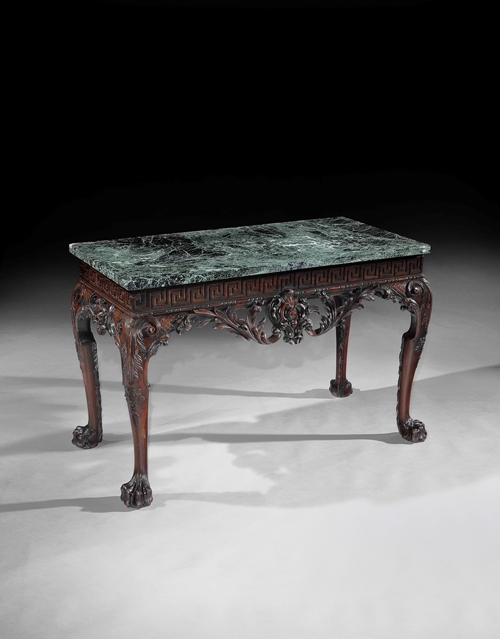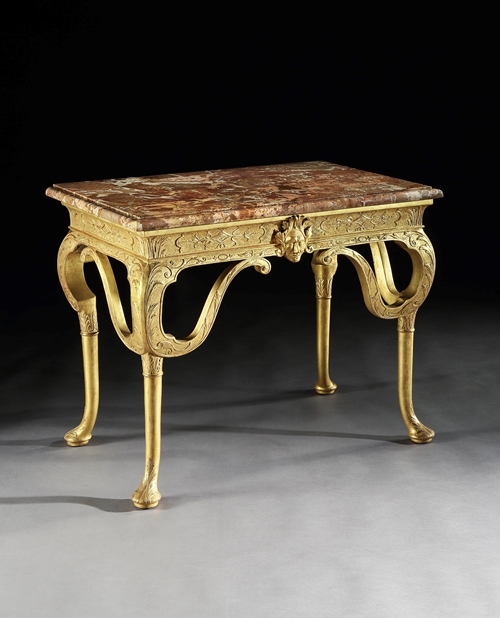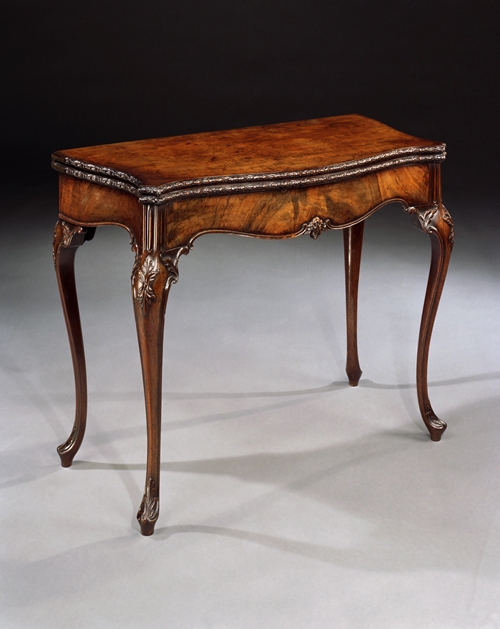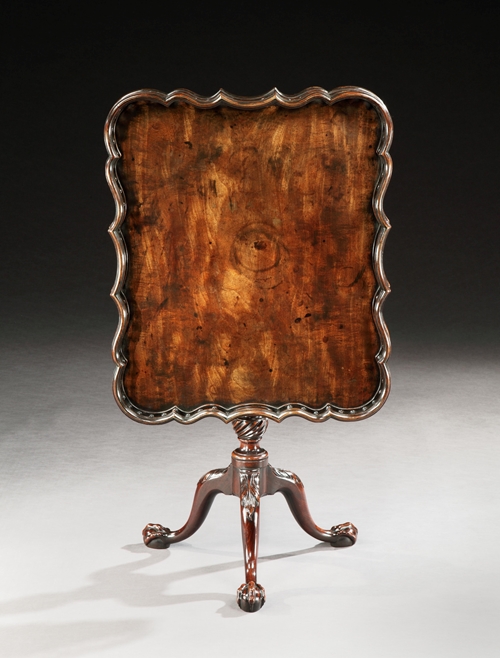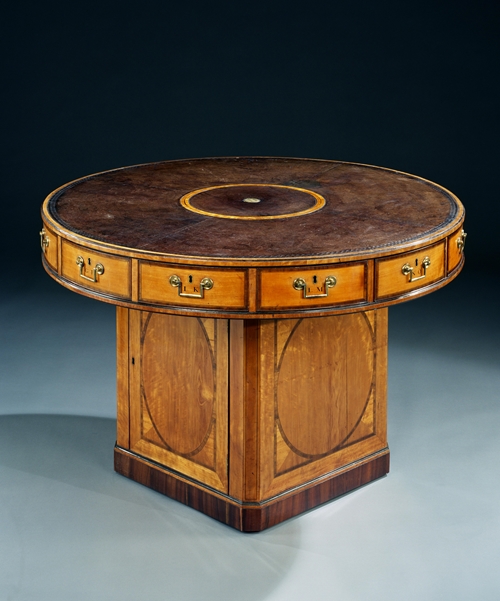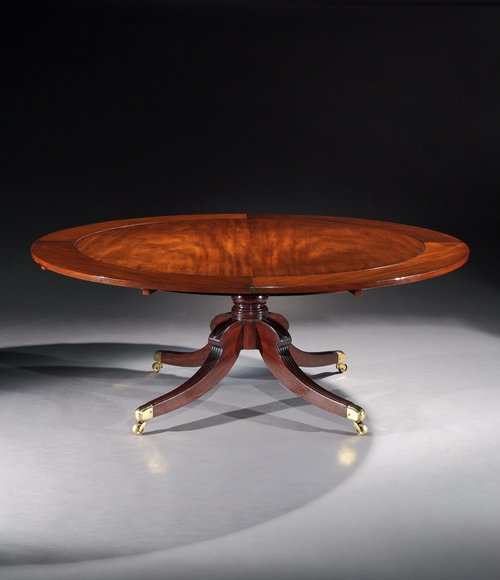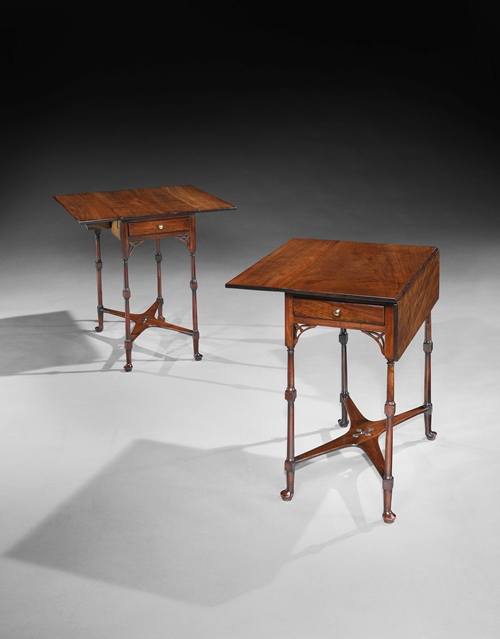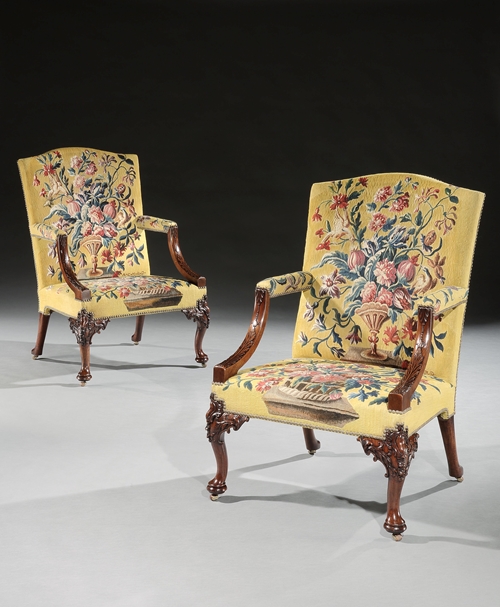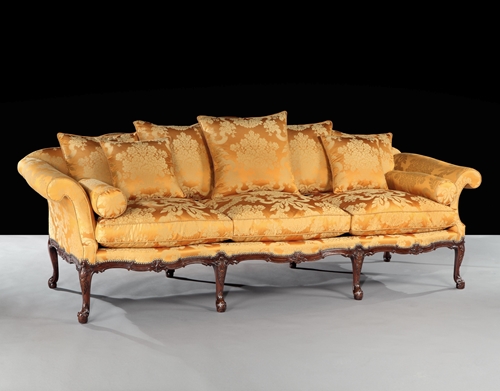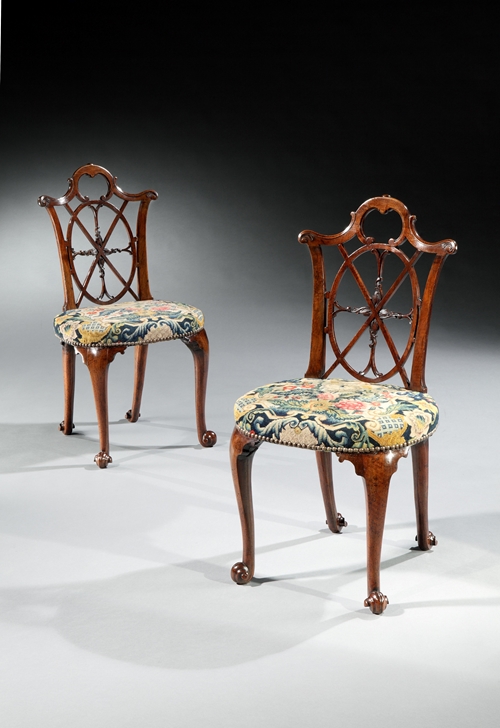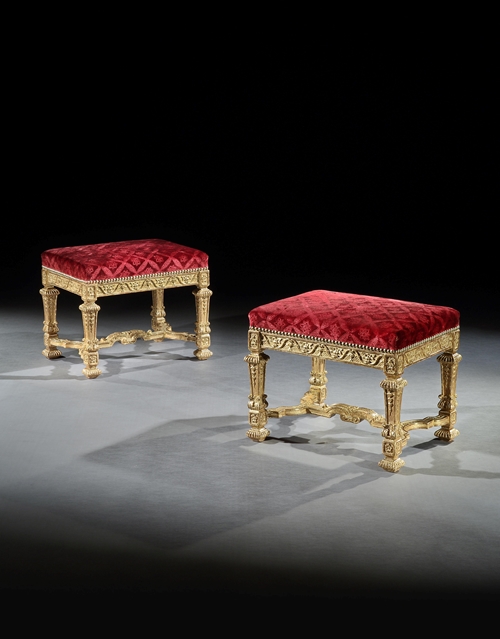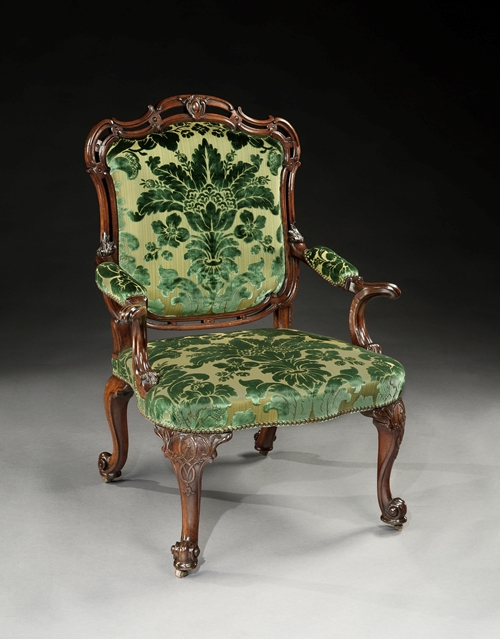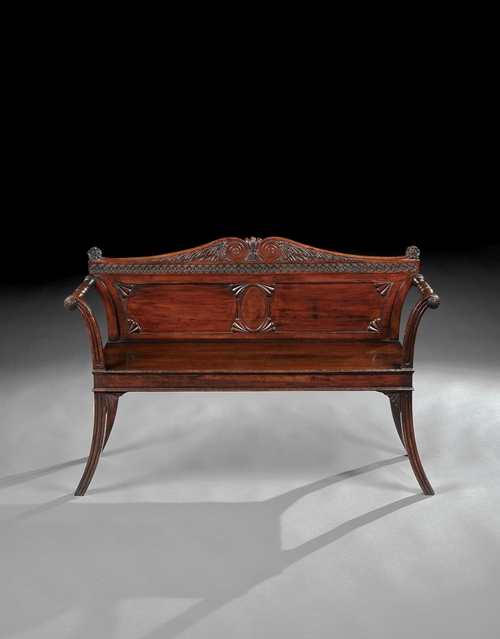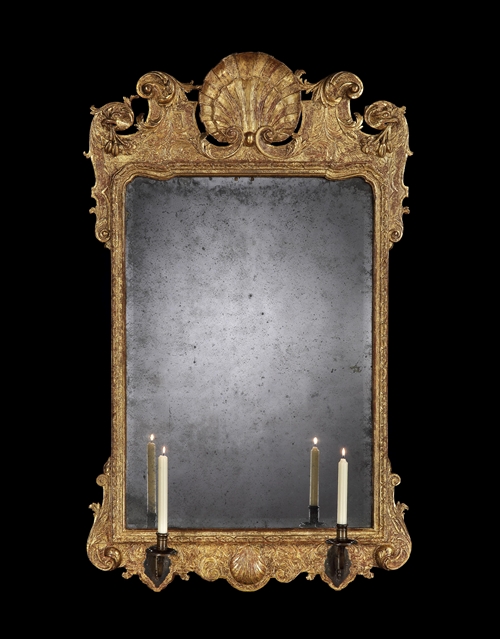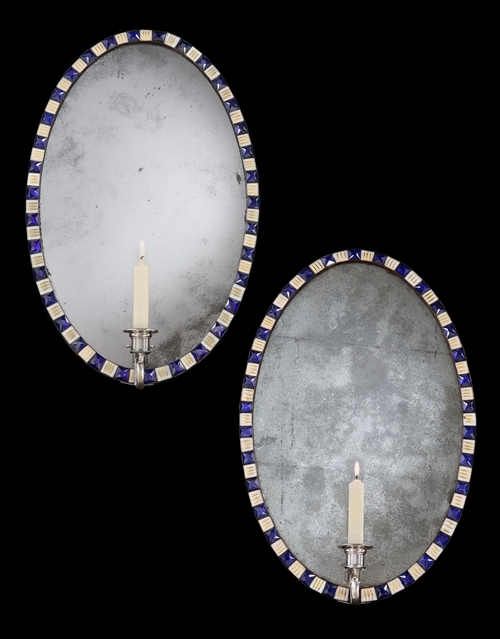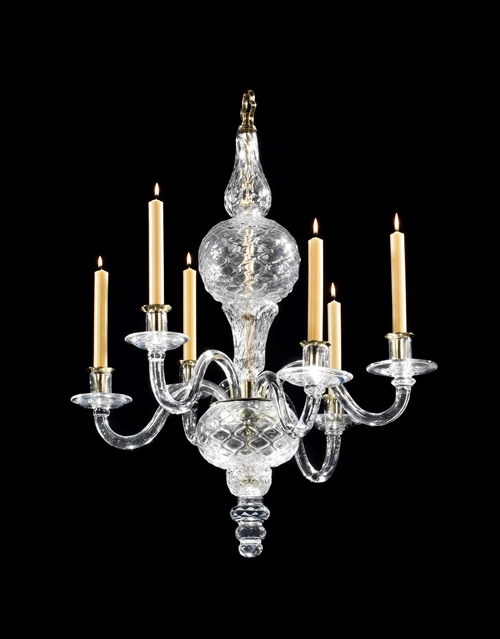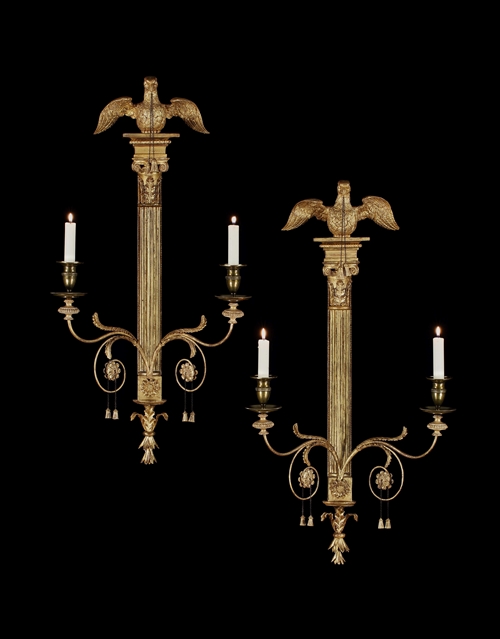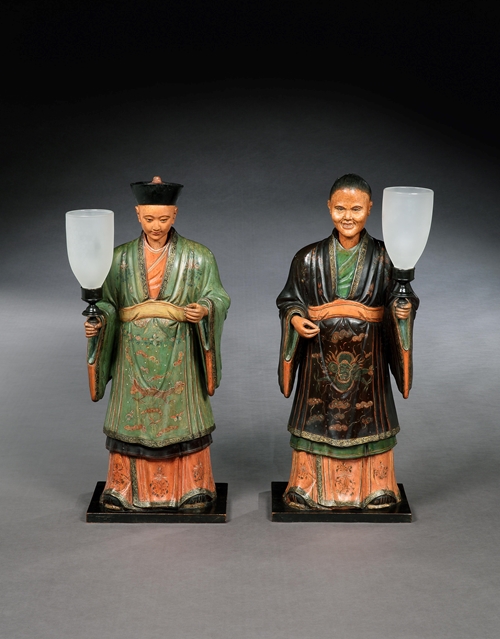A George III black lacquer and japanned side cabinet by Thomas Chippendale.
Note: The cabinet retains most of the original lacquered brass axe handles with some replacements.
Originally made for an alcove, with the japanned border of the top following the shape of the recess, the cabinet has later been adjusted to be freestanding.
Chippendale supplied four Chinese lacquer commodes and a secrétaire à abbatant to Edwin Lascelles for Harewood House, Yorkshire, England. Lascelles supplied the Chinese lacquer himself. The bill for the secrétaire à abbatant and the State Bedroom commode veneered in Chinese lacquer survive in the Harewood Archives:
June 12th, 1773
A Ladys Secretary vaneer’d with your own Japann with additions of Carved Ornaments & c Japann’d & part Gilt, the front of the Secretary to rise with Balance Weights. £26 - - .
November 12th, 1773
A large Commode with folding Doors vaneer’d with your own Japann with additions Japann’d to match with a dressing Drawers & c fine locks. £30 - -
A Damask Leather Cover to do. £- 15 – .
THE COUCH ROOM ASSOCIATION
Three commodes or cabinets of the four supplied by Chippendale as well as the secrétaire à abbatant have been accounted for. The State Bedroom Commode is now in the Gerstenfeld Collection in Washington, DC, USA. A pair of cabinets retailed by Mallett & Son in the 1950s are now in private collections. The secrétaire à abbatant, only rediscovered some thirty years ago, is now in the collection at Temple Newsam in Leeds, England.
The missing lacquer commode or cabinet is listed in the 1795 inventory as being in the Couch Room. The inventory listing is as follows:
In the Couch Room
1 Japan Commode.
The decorative detail on the japanned parts which frame the oriental true lacquer was applied by the Chippendale workshop and itemised in the bills for the secrétaire and the State Bedroom Commode: ‘with additions japann’d’.
The originally bright red colour glazing, which was painted on top of the gilded parts of the decoration in the form of shading, thus creating a three-dimensional effect, is found only on pieces from the Chippendale workshop. The pigment used by Chippendale’s for such shadows was scarlet lake, a bright red hue. Traditionally japanners of the period would have used burnt umber (a reddish-brown) or Van Dyke (a dark brown), or sometimes a combination of the two. Scarlet lake has so far been seen only on pieces directly associated with the Chippendale workshop. The secrétaire à abbatant at Osterley Park, Isleworth, England, for example, and the pair of commodes at Birdsall House in Yorkshire all feature the scarlet lake shading.
The design elements of these japanned areas are repeated on all four commodes and the secrétaire à abbatant supplied to Harewood. These include the water leaf to the lower mouldings of the cabinet, the hatched motif around the drawers and the trailing leaf decoration to the edge of the top.
The handles to the drawers on the inside are of the typical Chippendale axe drop pattern, and although it was not used exclusively by the master, this further supports a firm Chippendale attribution.
The top features an original abnormality to the hatched border decoration to the sides. Almost three quarters of the hatched japanned border on each side towards the back is stepped in by three-quarters of an inch. The front part of this border is therefore stepped forward, leaving an undecorated black strip towards the back. Close inspection has revealed that this undecorated part has been added at a later stage, filling a cutout. The cutout would have been fitted into a recess for which the commode was marginally too wide. The window recesses at Harewood and in particular the recess in the Couch Room are of the correct dimensions to fit such a commode, thus further supporting the Harewood provenance.
With the arrival of central heating at Harewood House, the space occupied by this commode would have been taken over by a radiator. An image taken recently at Harewood illustrated the original window alcove with the radiator now present.
Literature:
The Earl of Harewood in Jane Sellars (ed.), The Art of Thomas Chippendale – Master Furniture Maker, 2000, p. 59.
Illustrated:
The Antique Dealer’s Fair and Exhibition handbook, 1954, p. 52; with Mallett & Son Ltd., London.
Exhibitions: The Antique Dealer’s Fair and Exhibition, London, 1954; with Mallett & Son Ltd., London.
-
Provenance
Edwin Lascelles, 1st Baron Harewood, Harewood House, Yorkshire, England.
Mallett & Son Ltd., London, England, 1954.
John Tillotson, until 1984, England.
Private collection, USA.
Looking for something similar? YOU MAY ALSO LIKE
YOU HAVE RECENTLY VIEWED ITEMS
Make an enquiry
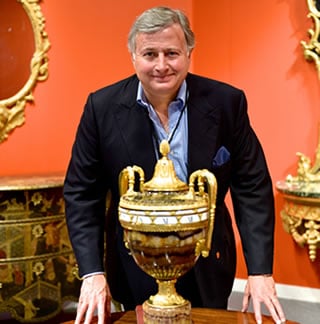
- CAN WE HELP YOU?
- +44 (0)20 7493 2341
- [email protected]
